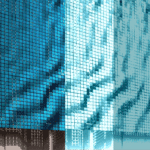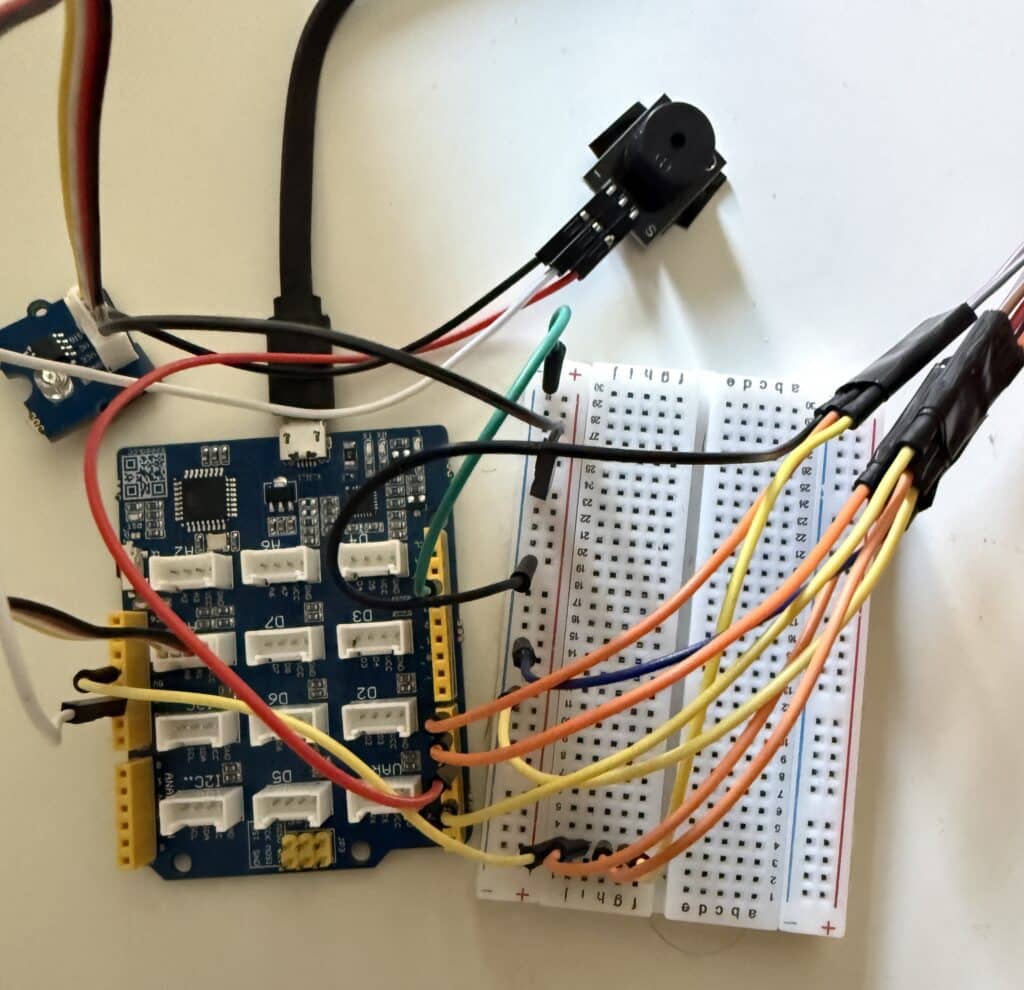
The kinetic façade dynamically responds to natural light through adaptive panels that modulate openness and shading, creating a living skin that breathes with the environment. As daylight fades, the integrated buzzer activates, signaling the transition from day to night transforming the façade into an expressive architectural interface between nature and technology.

Pin-mount suspension system
The pin-mount suspension system allows the flapper elements to seemingly float in front of the support rungs and side rails as a veil. This configuration minimizes the appearance of the supporting structure. The pin-mount system allows for mixing flapper shapes to create geometric patterns and for installation at various mounting points, facilitating changes in kinetic activity.
Circuit Diagram


Project Code
How to create a simple kinetic façade prototype using Arduino, servo motors, and a light-dependent resistor (LDR) was explored in the project . The façade reacts to ambient light levels: when it’s bright, the panels move dynamically, and when it’s dark, the system stops and triggers a buzzer as a signal.
Below is the Arduino code that forms the core logic of our kinetic façade system. It controls three servo motors that represent façade panels and uses an LDR to detect light intensity.


BOM (Bill of Materials)
The following Bill of Materials outlines all electronic and mechanical components used in this prototype.



THE PROTOTYPE
In modern architecture, kinetic façades are transforming static buildings into living, breathing systems that respond dynamically to their environment. These façades use sensors, motors, and smart algorithms to adjust panels or shading devices according to external stimuli — such as sunlight, temperature, or wind — improving energy efficiency and visual appeal.




The LDR continuously measures light intensity.
When the light level is below a certain threshold (e.g., 400), the servos stop, and the buzzer activates.
When the light level rises above the threshold, the servos move in a smooth oscillation, mimicking kinetic movement on a building’s façade.
The motion alternates between forward and reverse, creating continuous dynamic behavior.
HOW IT
WORKS ?

